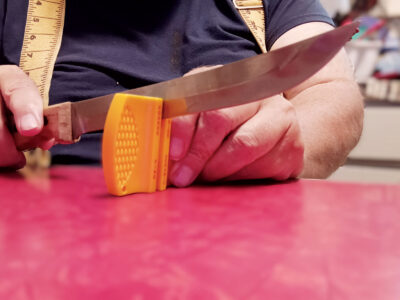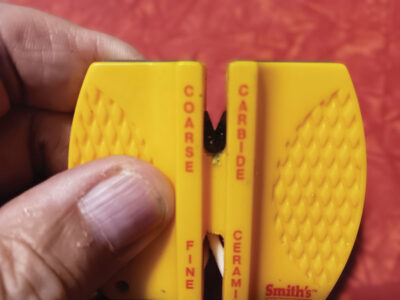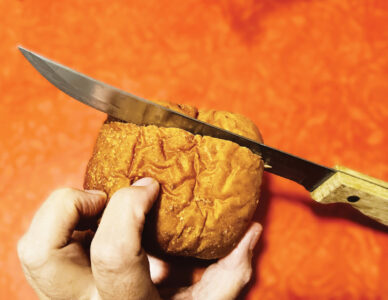Wastin’ Time: Sharpening a knife yourself doesn’t have to be a total grind
- Pull the knife over the cutting carbide blades, then further hone with the ceramic rods. I’ve found this produces a sharp knife in a jiffy without the hassle of whetstones or other devices. (Photo provided by Jess Mancini)
- This is the brand I purchased to sharpen my knives. Other sharpeners are available on the market. (Photo provided by Jess Mancini)
- The sharpened knife slices bread, although a serrated knife is better. (Photo by Jess Mancini)
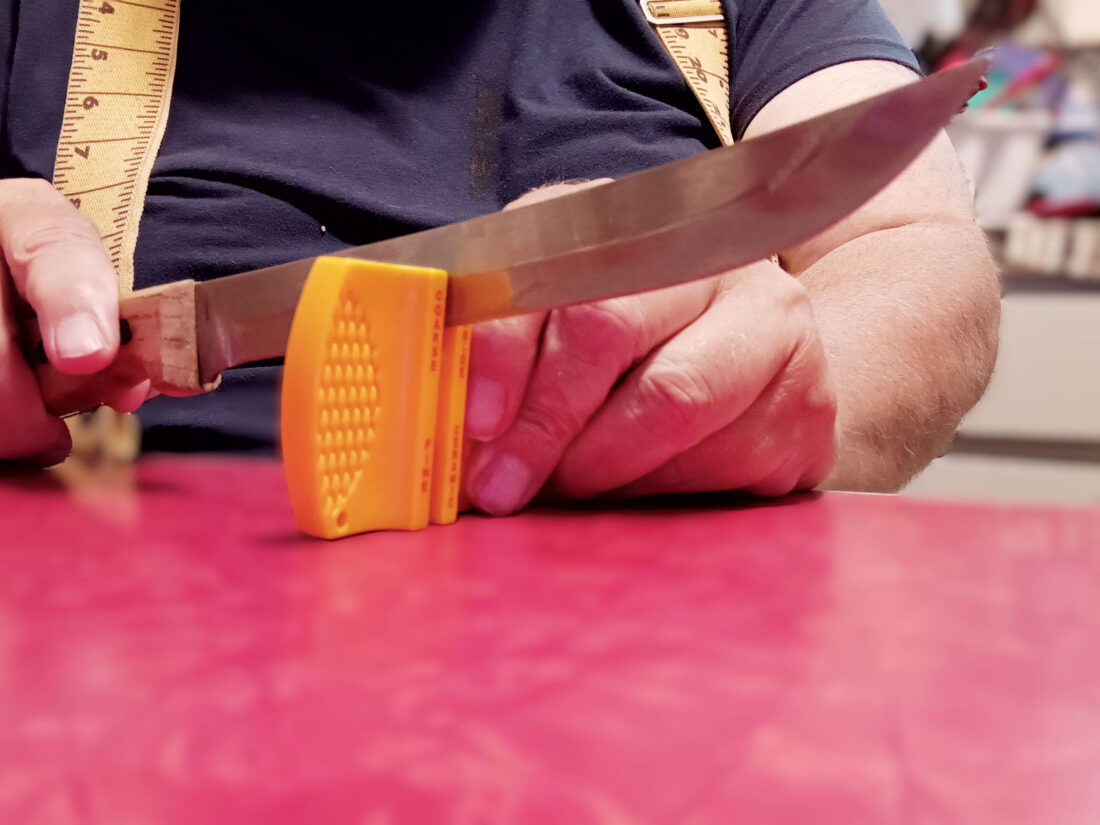
Pull the knife over the cutting carbide blades, then further hone with the ceramic rods. I’ve found this produces a sharp knife in a jiffy without the hassle of whetstones or other devices. (Photo provided by Jess Mancini)
A video on YouTube shows a guy describing his collection of “every-day-carry” pocket knives, all several dozen of them. My impression was most of the knives were expensive, which I define as $50 and more. Many of them were much more than $50. He said so.
If “every-day-carry” means it’s carried every day, why would you need more than one? If you’re meaning “every-day-carry once in a while,” I can understand that.
I don’t carry a pocket knife unless I know I’m going to need one, and when I need it or a kitchen knife, I want them to be sharp.
That brings me to the theme of this month’s “Wastin’ Time:” sharpening a knife.
I’m not an expert knife sharpener, let me get that out of the way. Plenty of people know more than I do. I believe sharpening a knife on a whetstone requires practice to develop the technique and muscle memory that comes from regularly sharpening. I don’t sharpen knives on a regular basis. I don’t have a technique. I don’t have muscle memory.
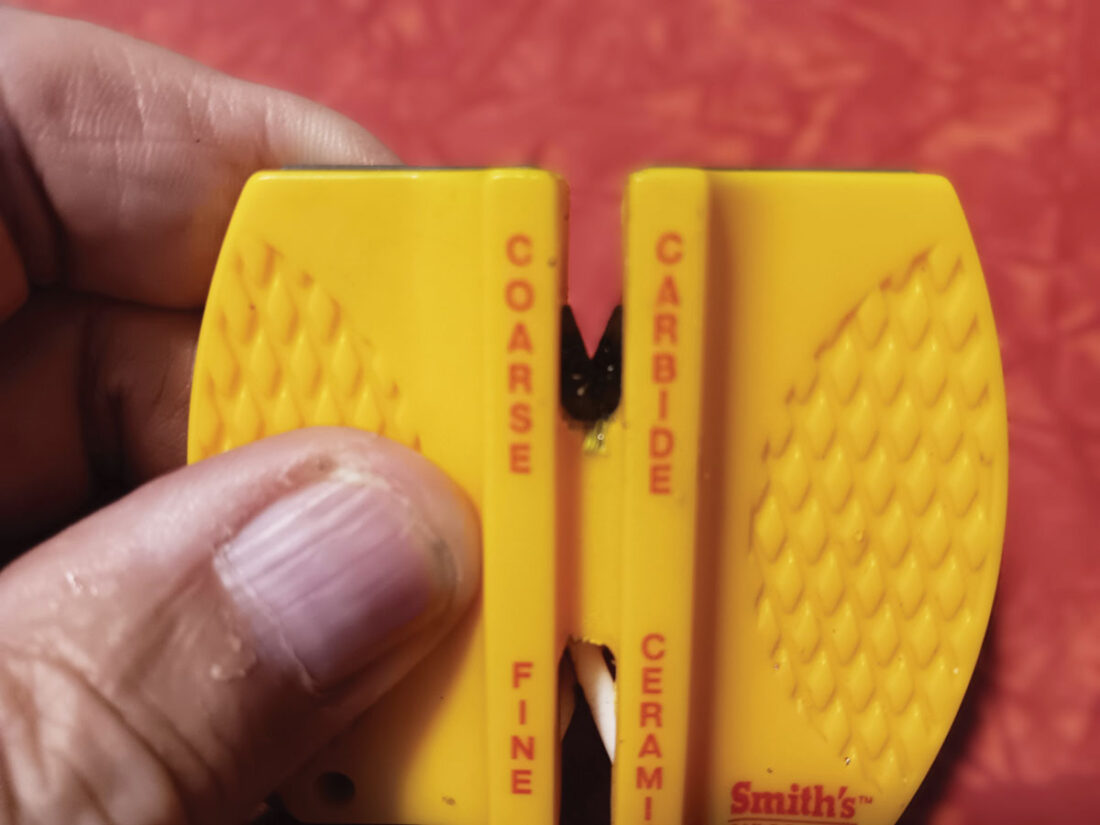
This is the brand I purchased to sharpen my knives. Other sharpeners are available on the market. (Photo provided by Jess Mancini)
Years ago I found a knife sharpener made by Smith’s that seemed like it would make sharpening easy. Similar sharpeners are on the market, too. On one end are two carbide blades in a vee to cut the edge at the correct angle. You run the blade in the vee until it’s sharp. On the other end are two ceramic rods to hone the edge. After the blade is sharpened with the carbide blades and a few passes on the ceramic rods, the blade is sharpened and honed as much as I need it to be. (For the record, serrated kitchen knives require a different method, but since I only use them to slice bread, the edge lasts a long time without the need for sharpening. I have a serrated bread knife that is as sharp as when I bought it 30 years ago.)
Simple. Easy. Quick. You don’t have to worry about the angle of the blade on a whetstone. You can sharpen a knife in a jiffy and carry the sharpener in your pocket or in a kitchen drawer where it’s readily available when needed.
Sharpening purists may disagree. However, if sharpening with a whetstone produces a better edge, I wouldn’t know because I couldn’t tell the difference when I’m cutting my ribeye. Most of us aren’t woodcarvers or surgeons who need carving tools and scalpels with a polished, super-sharp edge. Most of us have kitchens and dinner tables and want a jiffy and simple way to sharpen a knife.
If you need to carve a turkey, the Smith-style sharpener is plenty. If you’re going to perform an appendectomy, maybe you should sharpen the other way.
***
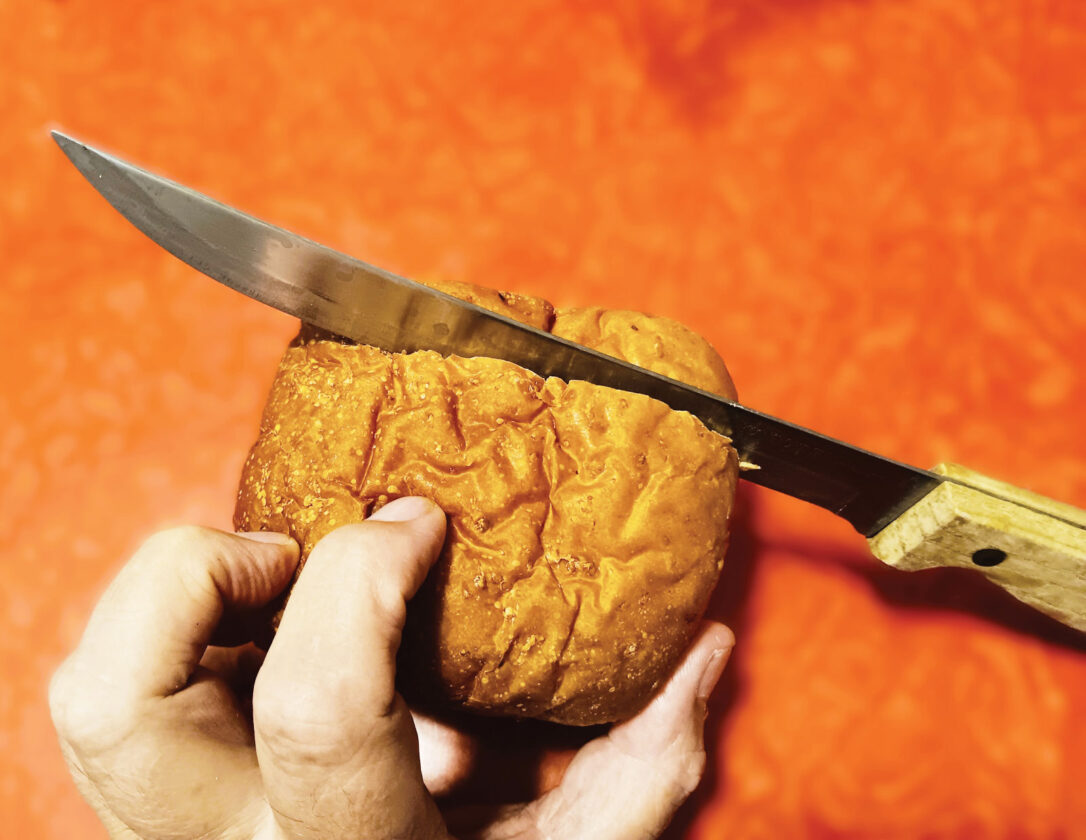
The sharpened knife slices bread, although a serrated knife is better. (Photo by Jess Mancini)
Unless you think this column wasn’t enough of a waste of time, send ideas for “Wastin’ Time with Jess Mancini” to Jess Mancini at jmancini@newsandsentinel.com.

